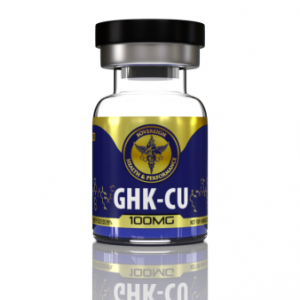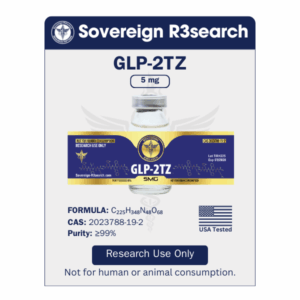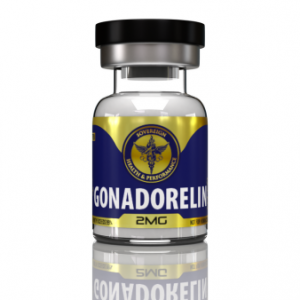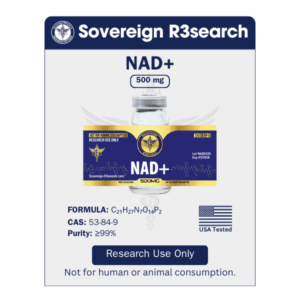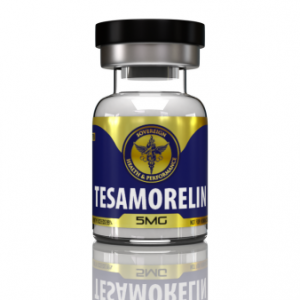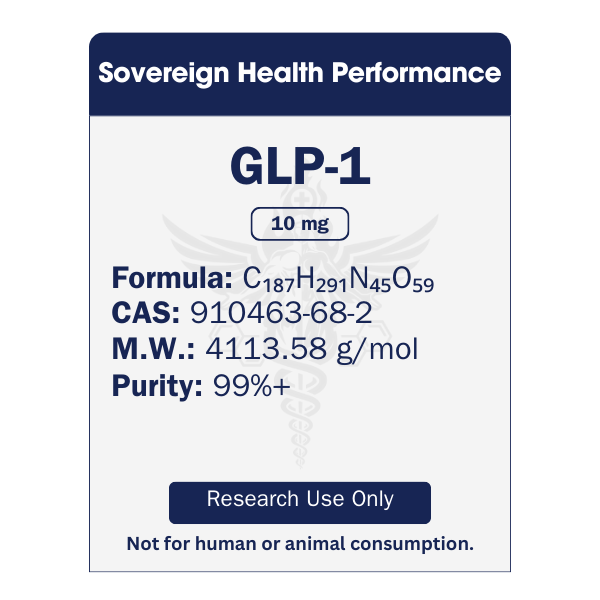

GLP-1
$115.00 – $229.00Price range: $115.00 through $229.00
Research Only Purposes
- Description
- Quality Documentation
- Additional information
Description
Introduction to Semaglutide (Research Use Only)
Semaglutide is a synthetic peptide analog belonging to the glucagon-like peptide-1 (GLP-1) family. It is designed to mimic the effects of endogenous GLP-1, a naturally occurring incretin hormone that helps regulate insulin secretion, glucose metabolism, and appetite control.
As a research compound, Semaglutide provides scientists with a valuable model for studying GLP-1 receptor activation, metabolic signaling pathways, and peptide pharmacokinetics. Structural modifications to Semaglutide—including amino acid substitutions and a fatty acid side chain—extend its half-life and stability, making it a focus of ongoing investigation into long-acting peptide analogs.
Molecular Structure

Sequence: HXEGTFTSDVSSYLEGQAAK-OH.steric diacid-EFIAWLVRGRG
Molecular Formula: C₁₈₇H₂₉₁N₄₅O₅₉
Molecular Weight: 4113.58 g/mol
PubChem CID: 56843331
CAS Number: 910463-68-2
Synonyms: Semaglutide; NN9535; OG217SC; NNC 0113-0217; GLP-1 receptor agonist (GLP-1RA); long-acting GLP-1 analog
Source: PubChem
Note: The molecular information above is provided for educational and comparative purposes. Semaglutide is a GLP-1 receptor agonist used in laboratory research to better understand receptor pharmacology and metabolic signaling. It is not intended for human use.
Research Highlights
1. GLP-1 Receptor Pharmacology
Semaglutide binds to and activates the GLP-1 receptor (GLP-1R), a G-protein–coupled receptor found in pancreatic β-cells, the gastrointestinal tract, and the central nervous system. Activation enhances glucose-dependent insulin release, inhibits glucagon secretion, and slows gastric emptying—mechanisms widely studied in metabolic research.
2. Metabolic Signaling and Energy Regulation
In experimental models, Semaglutide has been shown to influence pathways such as AMP-activated protein kinase (AMPK) and PI3K/Akt, promoting improved glucose uptake, lipid oxidation, and reduced inflammation. These effects have made it a cornerstone for exploring how GLP-1 analogs impact cellular energy balance and systemic metabolism.
3. Central Nervous System and Appetite Control
GLP-1 receptors are expressed in the hypothalamus and brainstem, key centers for appetite and satiety. Studies indicate that Semaglutide modulates neuronal signaling related to hunger and reward, contributing to a deeper understanding of gut-brain axis communication in metabolic homeostasis.
4. Structural Modifications and Stability
Semaglutide’s enhanced stability results from strategic amino-acid substitutions and the attachment of a C18 fatty diacid chain, which promotes reversible binding to serum albumin and protects against degradation by dipeptidyl peptidase-4 (DPP-4). These modifications extend its half-life to approximately one week—critical for studying long-acting peptide pharmacology.
5. Safety and Research Context
While Semaglutide has been widely studied in clinical and preclinical contexts, it remains a research-use-only compound in laboratory environments. Reported findings from experimental models include gastrointestinal effects, altered feeding behavior, and dose-dependent metabolic responses. Laboratory results should not be interpreted as clinical outcomes.
Supporting References (Contextual GLP-1 Literature)
(Semaglutide-specific publications are included below to illustrate GLP-1 receptor biology and analog design.)
-
Lau J, Bloch P, Schäffer L, Pettersson I, Spetzler J, Kofoed J, et al. Discovery of the once-weekly glucagon-like peptide-1 (GLP-1) analogue Semaglutide. J Med Chem. 2015;58(18):7370-7380. doi:10.1021/acs.jmedchem.5b00726
-
Jensen L, Kupcova V, Arold G, et al. Pharmacokinetics of Semaglutide following once-weekly subcutaneous administration in healthy subjects and those with type 2 diabetes. Diabetes Obes Metab. 2018;20(4):821-831. doi:10.1111/dom.13148
-
Wilding JPH, Batterham RL, Davies M, et al. Once-weekly Semaglutide in adults with overweight or obesity. N Engl J Med. 2021;384(11):989-1002. doi:10.1056/NEJMoa2032183
-
Drucker DJ. Mechanisms of action and therapeutic application of glucagon-like peptide-1. Cell Metab. 2018;27(4):740-756. doi:10.1016/j.cmet.2018.03.001
Additional information
| CAS | 910463-68-2 |
|---|---|
| MG | 10, 5 |
| Brand | Sovereign Health and Performance |




